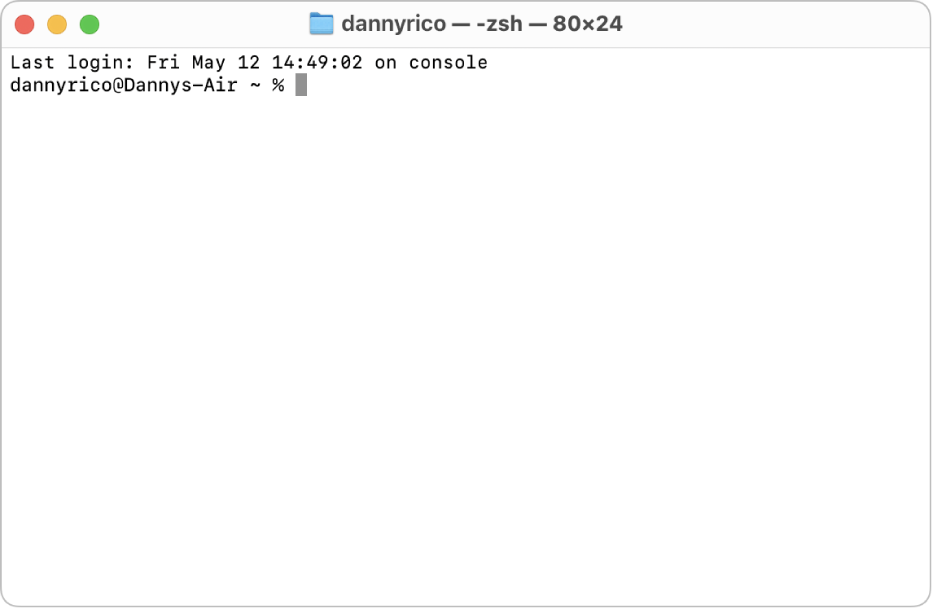
What is Terminal on Mac?
Terminal is an app for advanced users and developers that lets you communicate with the Mac operating system using a command line interface (CLI). You enter commands and scripts (called shell scripts) to perform tasks on your Mac.

When you open Terminal, you see a simple window with a command line prompt. Terminal has a sophisticated catalogue of commands and options that you can use to execute simple to highly complex tasks. For more information about displaying and using commands in Terminal, see Reading UNIX Manual Pages on the Apple Developer website.
Unlike typical Mac apps where you use a graphical user interface (GUI) — buttons, sliders, menus — to perform tasks and access app features, Terminal requires you to enter lines of code in the command line interface. These code commands (and multiple commands sent as scripts) are executed by a shell, which is a user interface to the Unix operating system.
In Terminal, you can execute commands and scripts that tell the shell what to do. For example, you might enter a command to show the contents of a folder or a script that automates opening an app and performing a task.
You can also use simple scripts with Terminal to save time or automate repetitive tasks. When you need to automate or work with scripts at a fast low-level of programming, Terminal provides excellent access to the input and output of Unix operating shells, including BASH and ZSH.
To learn more about using Terminal and creating scripts, see the Shell Scripting Primer on the Apple Developer website.
Note: Terminal is also useful when troubleshooting issues with your Mac with Apple Support. It’s recommended that you don’t delete it.